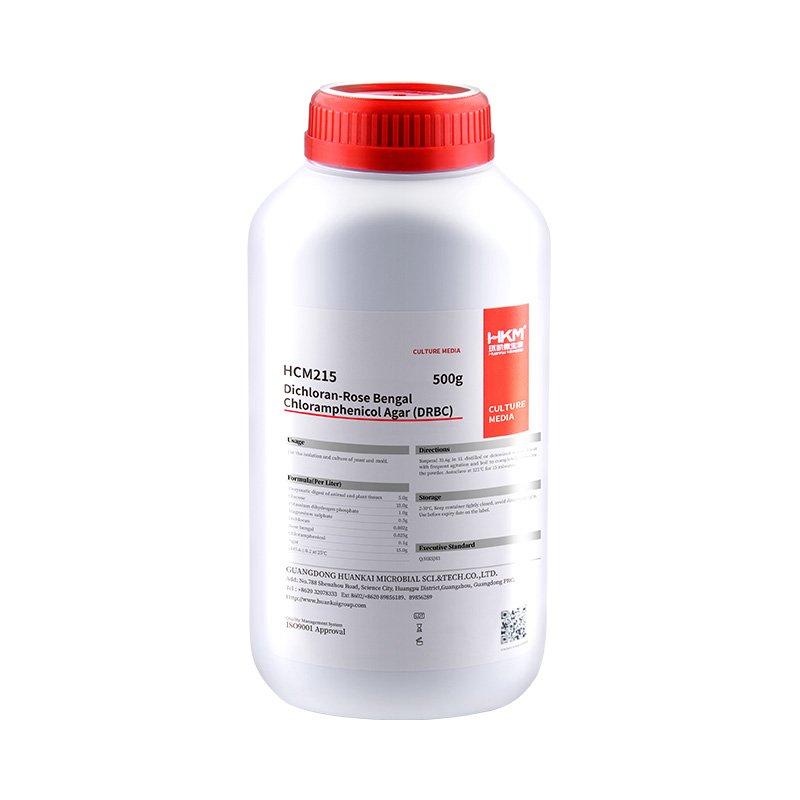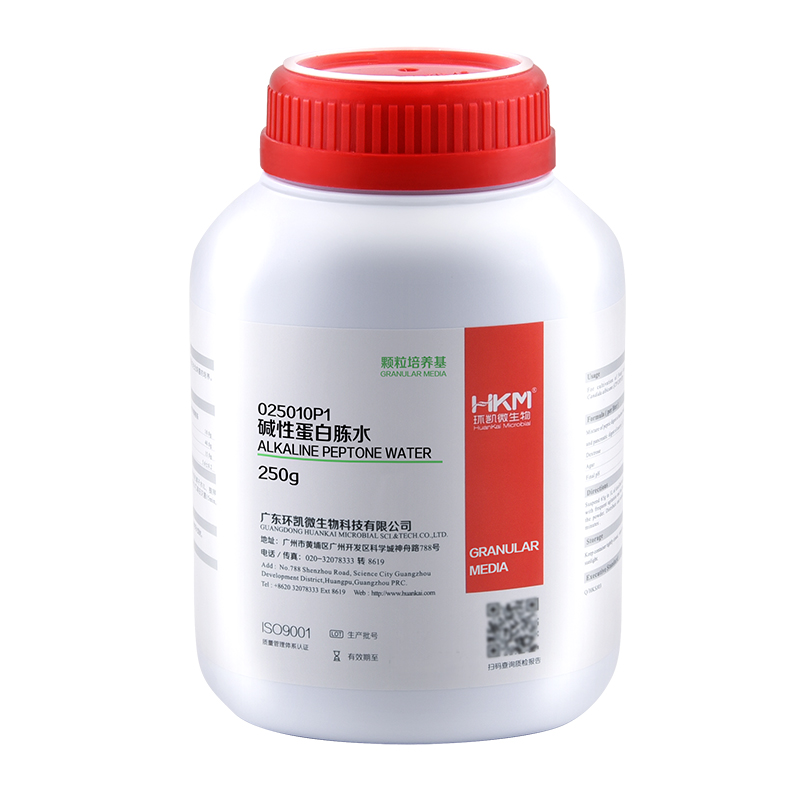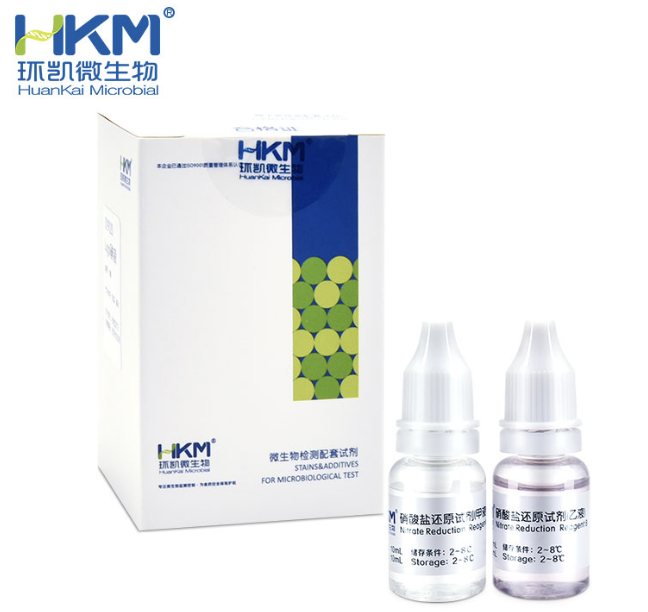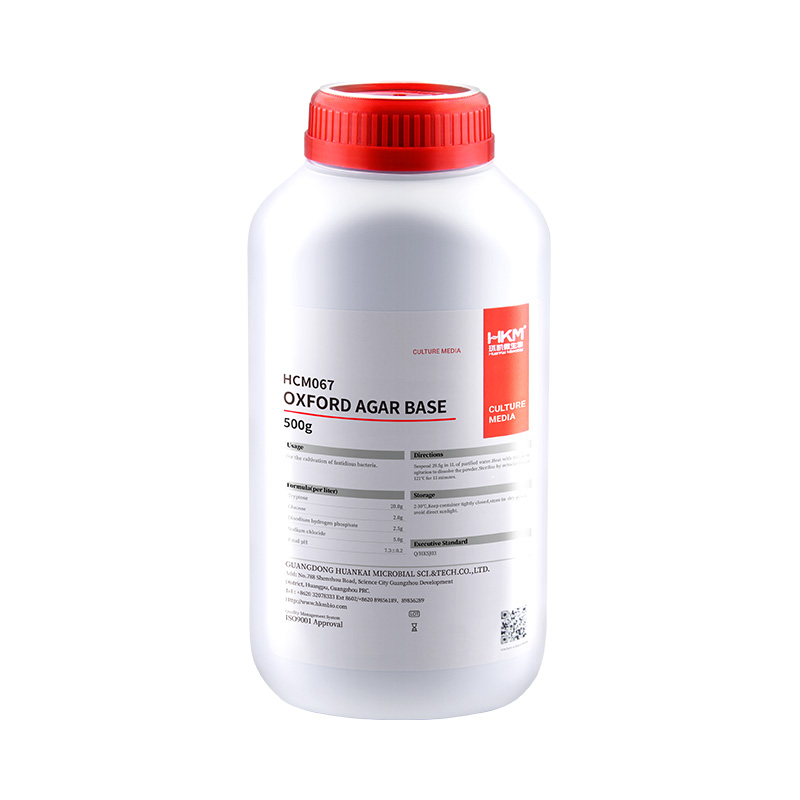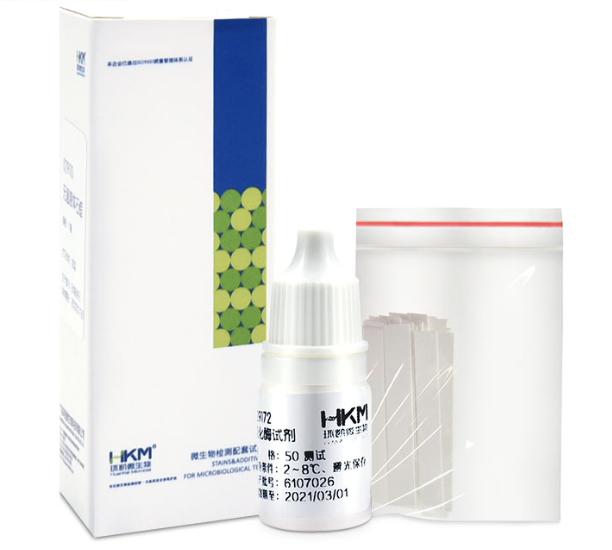HCM215 Dichloran-Rose Bengal Chloramphenicol Agar
$39-60
Intended Use For the isolation and culture of yeast and mold. Principle and Interpretation Enzymatic hydrolysis of animal and plant tissues provides nitrogen source, vitamins, growth facto……
Introduction
Intended Use
For the isolation and culture of yeast and mold.
Principle and Interpretation
Enzymatic hydrolysis of animal and plant tissues provides nitrogen source, vitamins, growth factors. Glucose provides carbon source. Potassium dihydrogen phosphate as a buffer. Rose Bengal as a selective bacteriostatic agent, inhibit the growth of bacteria. Chloramine can slow down the spread of mold growth. Agar is a coagulant.
Formula
Dichloran Rose Bengal Chloramphenicol Agar (DRBC)
| Product No. | Product Category | Specification |
| HCM215 | Dehydrated Culture Medium | 500g/bottle |
| Ingredients | /liter |
| Enzymatic digest of animal and plant tissues | 5.0g |
| Glucose | 10.0g |
| Potassium dihydrogen phosphate | 1.0g |
| Magnesium sulphate | 0.5g |
| Dichloran | 0.002g |
| Rose bengal | 0.025g |
| Chloramphenicol | 0.1g |
| Agar | 15.0g |
| Final pH 5.6±0.2 at 25°C | |
Preparation
Suspend 31.6g in 1 L distilled or deionized water. Heat with frequent agitation and boil to completely dissolve the powder. Autoclave at 121°C for 15 minutes.
Quality Control
Cultural characteristics after 3-5 days at 24-26°C.
| Quality control strains | Growth |
| Saccharomyces cerevisiae ATCC 9763 | Good |
| Aspergillus brasiliensis ATCC 16404 |
Page 1 / 2
| Escherichia coli ATCC 25922 | Inhibited |
| Bacillus subtilis ATCC 6633 |
Storage and Shelf Life
Keep container tightly closed, store in a cool, dry place, away from bright light. Use before expiry date on the label.
Precautions
1. When weighing the dehydrated medium, please wear masks to avoid causing respiratory system discomfort 2. Keep container tightly closed after using to prevent clumping.
Waste Disposal
Microbiological contamination was disposed by autoclaving at 121°C for 30 minutes.
Revision
Apr 1, 2025
References
ISO 21527-1:2008: Microbiology of food and animal feeding stuffs – Horizontal method for the enumeration of yeasts and moulds – Part 1: Colony count technique in products with water activity greater than 0,95.
